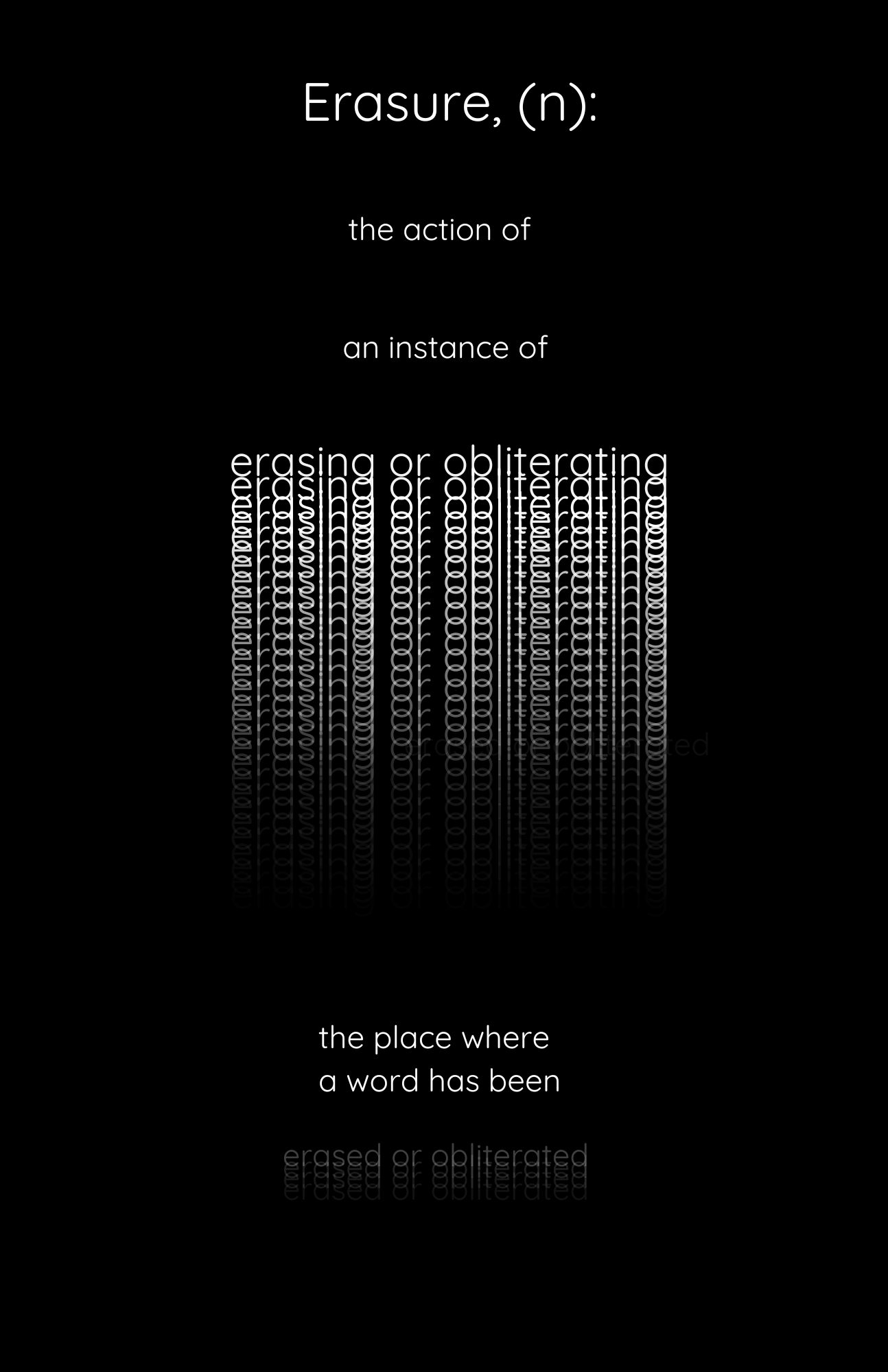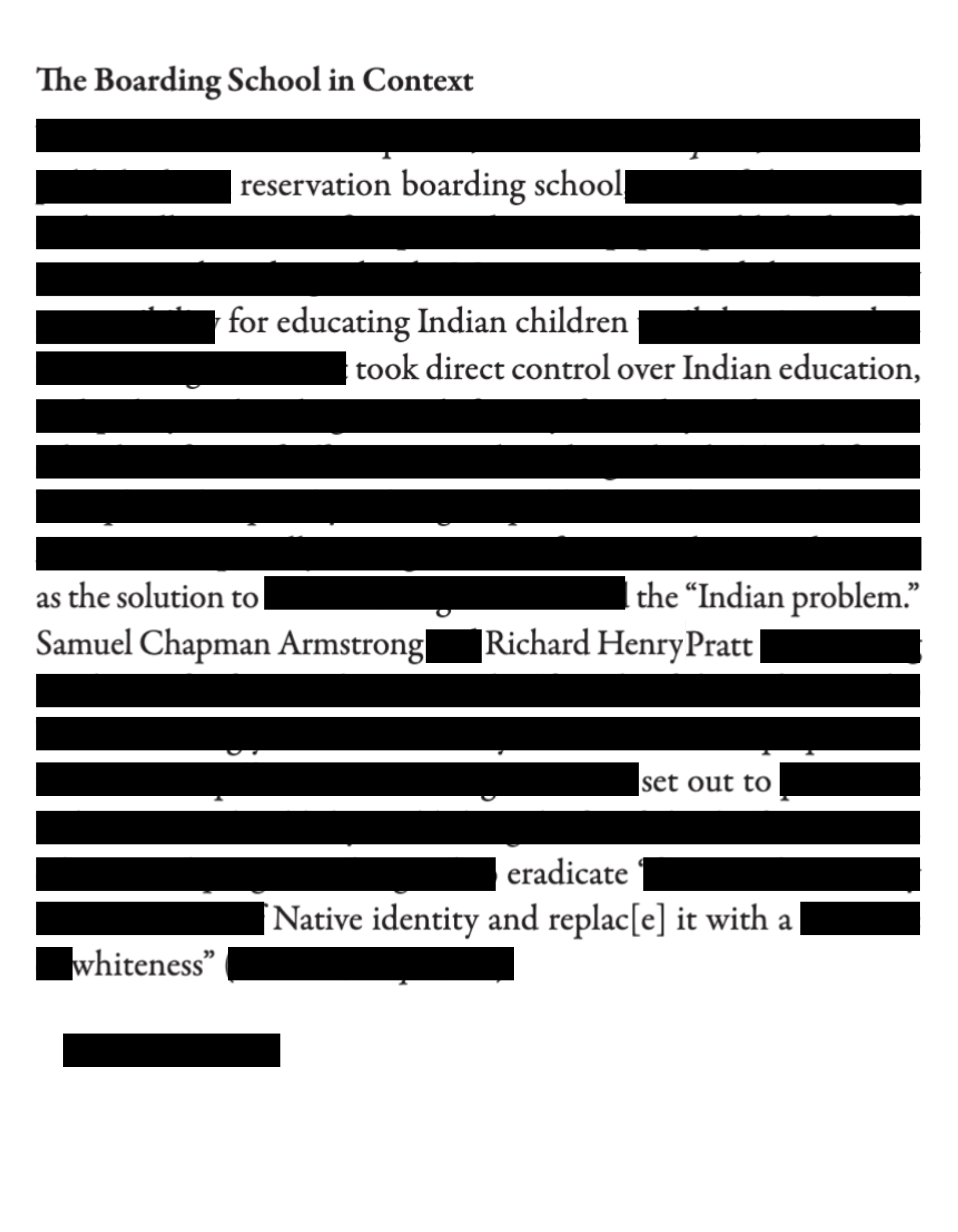

TOTAL DESTRUCTION, WIPING OUT.

Important Dates
The Indian Appropriations Act, enacted by Congress, establishes the Indian reservation system. This system confines Native Americans to designated areas known as reservations. Native Americans were not permitted to leave these areas without obtaining permission. Read more.
In 1876, the Battle of the Little Bighorn occured near the Little Bighorn River in Montana Territory. The conflict involved federal troops commanded by Lieutenant Colonel George Armstrong Custer and a coalition of Lakota Sioux and Cheyenne warriors. Tensions had been high since the discovery of gold on Native American lands, so when several tribes failed to meet a federal relocation deadline, the U.S. Army--including Custer and the 7th Cavalry--were sent to confront them. U.S. forces were unaware of the number of Indian warriors under Sitting Bull's command, Custer's forces were outnumbered and overwhelmed, resulting in the historic event known as Custer's Last Stand.Read more.
In an attempt to assimilate Native Americans, President Grover Cleveland signed the Dawes Severalty Act, ending tribal control of reservations and dividing their land into individual holdings. The act allowed the president to divide reservations into privately owned plots, with men receiving 160 acres, single adult men getting 80 acres, boys receiving 40 acres and women receiving no land. Motivated by a desire for native territory, the act resulted in the loss of 86 million acres, or 62 percent of pre-1887 Indian holdings. The promised benefits for Native Americans do not materialize. Despite resistance from tribes, the Dawes Act remained in force for over four decades until the Wheeler-Howard Act of 1934 saught to restore tribal control and cultural autonomy.Read more.
In 1971, a collective of Native Americans from the San Francisco Bay area, identifying as the "Indians of All Tribes," set forth to Alcatraz Island with the goal of establishing an Indian school, cultural center, and museum. Asserting their right to the island based on the concept of "discovery," drawing a parallel to the European colonization of North America, they declared Alcatraz as rightfully theirs. However, on June 11, 1971, armed federal marshals intervened, leading to the removal of the last remaining Indian occupants from the island.
Read more.

With only 2,000 Cherokees voluntarily relocating from their lands in Georgia to cross the Mississippi River, President Martin Van Buren employed General Winfield Scott and 7,000 troops to expedite the process. Cherokees were held at gunpoint and forced to march 1,200 miles. The harrowing journey resulted in the deaths of over 5,000 Cherokee individuals. This tragic event and the immense loss of life during the journey, became recognized as the Trail of Tears. Read more.
In 1864, Colonel John Chivington and his Colorado volunteers massacred Southern Cheyenne and Arapahoe Native Americans at Sand Creek, Colorado. The conflict arose from tensions over control of the Great Plains, exacerbated by the Treaty of Fort Wise's failure to sustain tribes. Chivington's troops attacked Chief Black Kettle's band on November 29, 1864, resulting in the deaths of 148 Native Americans--predominantly women and children. Although initially praised, the massacre later faced condemnation as the truth emerged. Chivington resigned, and Black Kettle continued peace efforts, leading his followers to a new reservation in Indian Territory in 1865.
Read more.
In the late 19th century, the U.S. government forcibly sent Native American children to "assimilation" boarding schools with the goal of eradicating their cultural identity. This harsh approach aimed to "kill the Indian in him, and save the man," as expressed by U.S. cavalry captain Richard Henry Pratt, the founder of Carlisle Indian Industrial School in Pennsylvania. Students faced deadly infections, and nearly 200 children were buried at Carlisle between 1879 and 1918. These boarding schools as part of broader assimilation attempt forbade Native languages and practices, giving children entirely new names and identities.
Read more.
On December 29, 1890, the U.S. Army's 7th Cavalry surrounded a group of Ghost Dancers and demanded their surrender. Led by Chief Big Foot, a fight erupted, leading to the death of approximately 150 Native Americans. Nearly half of the casualties were women and children, conversely, 25 U.S. cavalrymen died that day. Originally termed a "battle," in reality it was a massacre that marked one of the final tragic episodes in the Indian Wars. Read more.
In 1973, American Indian Movement members occupied Wounded Knee to protest historical injustices and poor living conditions on the Pine Ridge Reservation. Lasting 71 days, the standoff resulted in two deaths. AIM leaders surrendered after securing promises of investigations. Post-occupation, violence persisted, leading to more confrontations. In a 1975 shoot-out where two FBI agents and a Native man died.
Read more.
